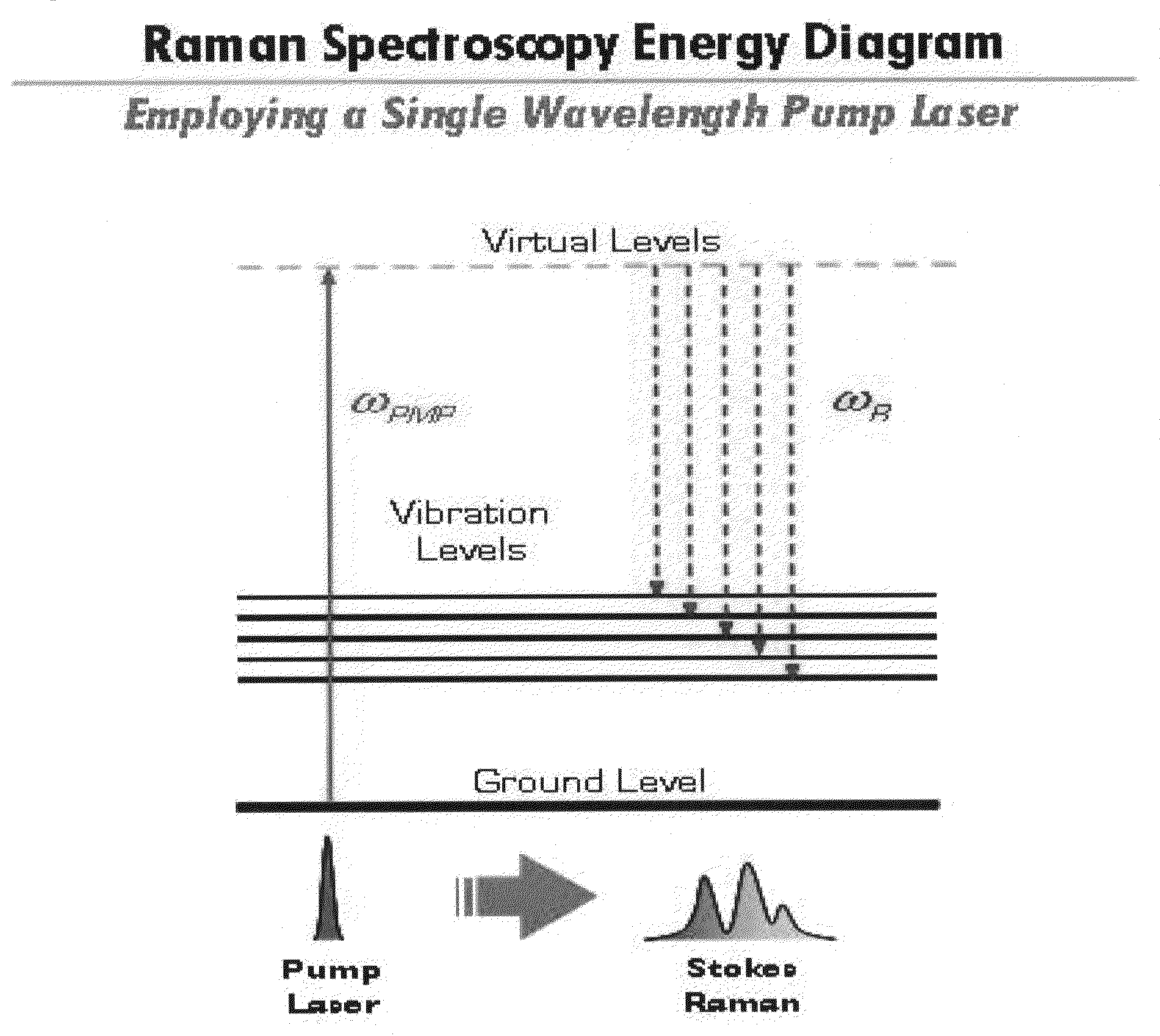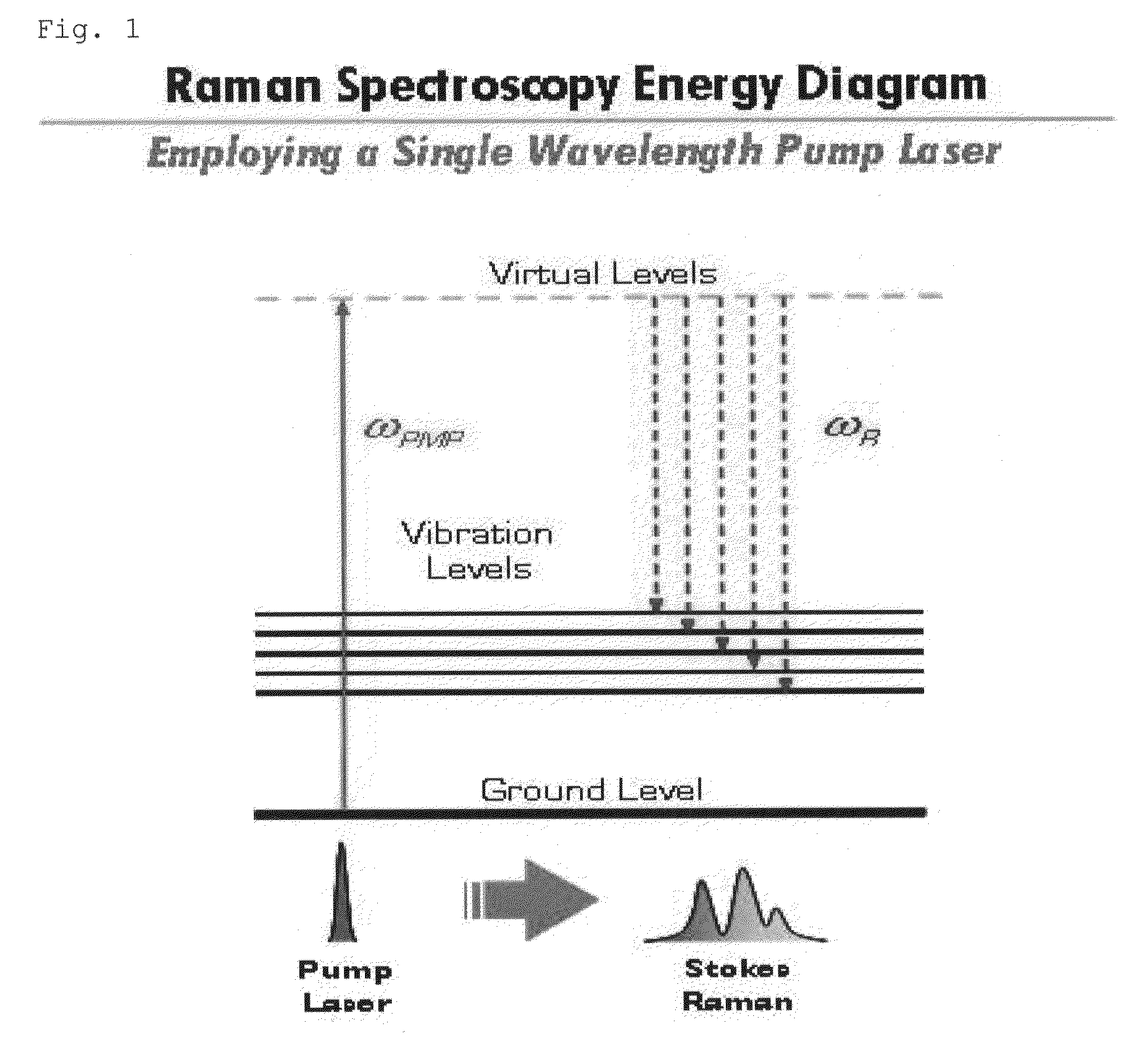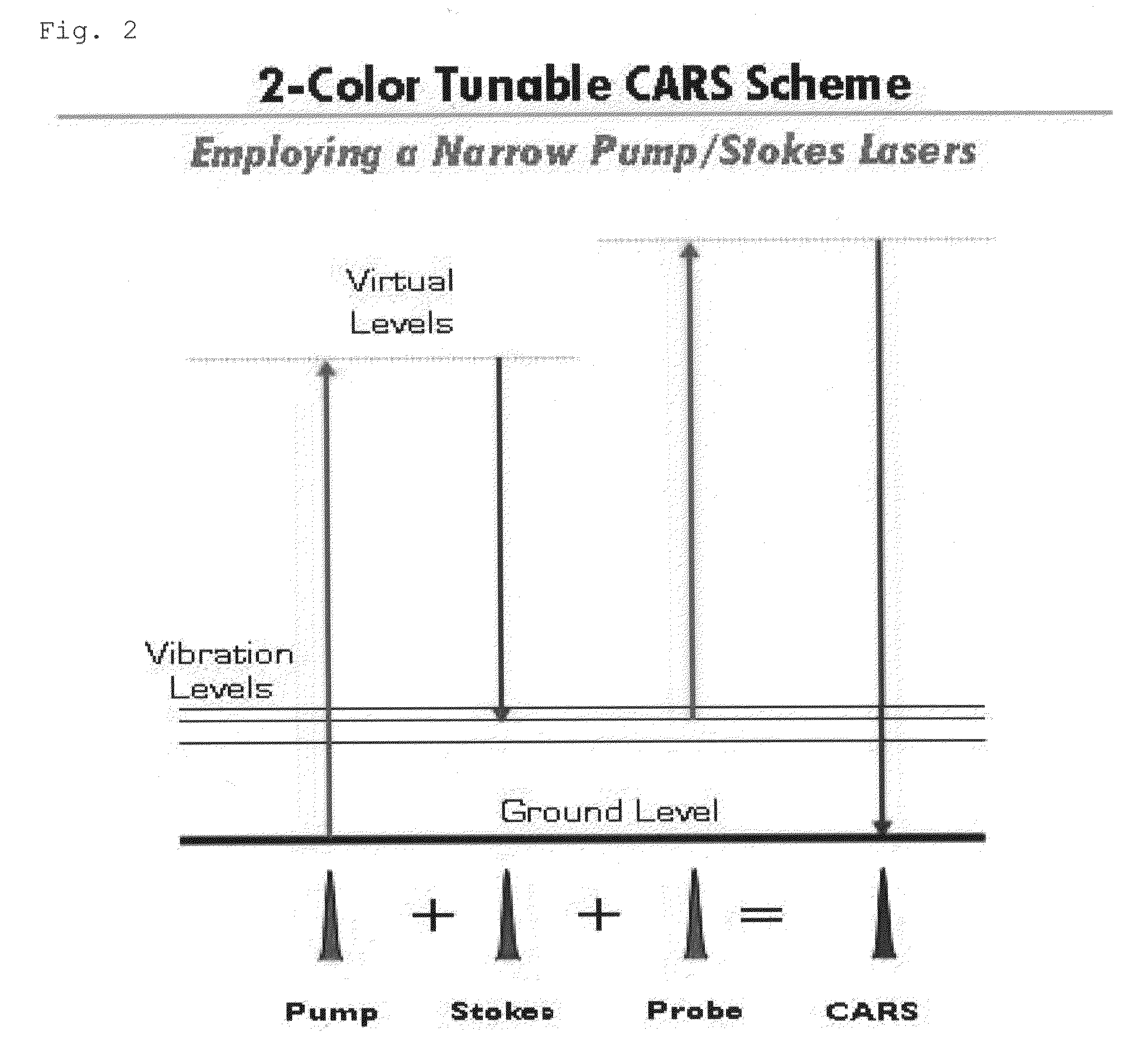3-Color multiplex cars spectrometer
a spectrometer and multiplex technology, applied in the field of 3color multiplex cars spectrometer, can solve the problems of difficult to obtain clear morphological images for various intracellular organelles and substances in the sample, difficult to measure the spatial distribution of molecular species, and difficult to obtain sufficient optical contrast, etc., to achieve stable and sufficient output, prevent the problem of car spectrum distortion, improve the molecular selectivity of fixed-wavelength cars imaging
- Summary
- Abstract
- Description
- Claims
- Application Information
AI Technical Summary
Benefits of technology
Problems solved by technology
Method used
Image
Examples
Embodiment Construction
[0036]10: broadband laser light source[0037]20: Stokes laser light source[0038]30: probe laser light source[0039]40: beam combiner[0040]50: microscope objective[0041]60: sample displacement scanner[0042]70: condensing optical system[0043]80: dichroic mirror[0044]90: monochromator[0045]100: 1D / 2D photodetector array[0046]110: data analyzer
BEST MODE FOR CARRYING OUT THE INVENTION
[0047]Hereinafter, a 3-color multiplex CARS spectrometer according to the present invention will be described in detail with reference to the accompanying drawings.
[0048]FIG. 5 is a diagram showing molecular vibrational energy levels and transitions in the 3-color multiplex CARS spectroscopy according to the present invention, and FIG. 6 is a diagram showing the configuration of a spectrometer using a newly proposed 3-color multiplex CARS spectroscopy according to the present invention.
[0049]In order to obtain a broadband molecular vibrational spectrum of a sample, the multiplex CARS spectrometer uses 3-color ...
PUM
 Login to View More
Login to View More Abstract
Description
Claims
Application Information
 Login to View More
Login to View More - R&D
- Intellectual Property
- Life Sciences
- Materials
- Tech Scout
- Unparalleled Data Quality
- Higher Quality Content
- 60% Fewer Hallucinations
Browse by: Latest US Patents, China's latest patents, Technical Efficacy Thesaurus, Application Domain, Technology Topic, Popular Technical Reports.
© 2025 PatSnap. All rights reserved.Legal|Privacy policy|Modern Slavery Act Transparency Statement|Sitemap|About US| Contact US: help@patsnap.com



